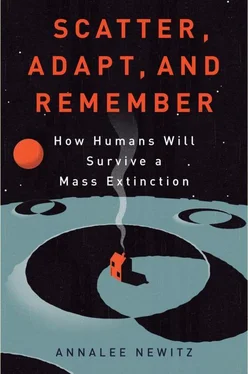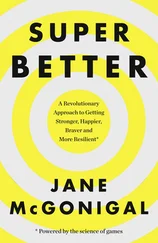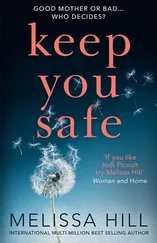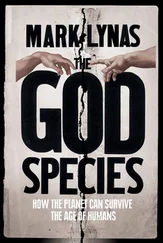Kirschvink believes that there may have been as many as three snowball phases on Earth. “It was the longest, weirdest perturbation in the carbon cycle,” Kirschvink said. “And my explanation for it is simple. It’s the time between when the biosphere learned to make atmospheric oxygen and the time when everybody else learned to breathe it and use it.” Without any creatures around to breathe oxygen, the cyanobacteria likely created an atmosphere far more oxygenated than any we’ve ever known.
For 1.5 billion years after cyanobacteria evolved, Earth’s biosphere was in chaos. At least two more snowballs crept across the face of the planet, followed by intensely hot greenhouse conditions caused when volcanoes pumped carbon back into the air. Meanwhile, microbes were slowly learning to use oxygen to their advantage. A new kind of cell called a eukaryote began to populate the seas. Unlike cyanobacteria, which are basically just genetic material contained inside a membrane, a eukaryotic cell contains a nucleus packed with DNA as well as tiny organs called, appropriately enough, organelles. One of those organelles, called a mitochondrion, could turn free oxygen and other nutrients into energy. At last, Earth was inhabited by oxygen-breathers. The planet we know today was taking shape.
While the eukaryotes got busy swapping genetic material and sucking oxygen from the air, the old methane-breathers were dying out. A few migrated to the sea floor, finding niches near superheated volcanic vents where they could live in the remaining fragments of a once-global methane ecosystem. But the rest went extinct. It was the most extreme form of atmospheric pollution in Earth’s history, soon killing off almost every form of life that couldn’t breathe oxygen.
By “soon,” I mean within a billion years, or possibly 2 billion—a period of time that’s almost impossible to wrap our minds around. Still, that is the timescale required to understand Earth’s environmental transformations. Many of the catastrophic changes we’ll discuss over the next few chapters took millions of years to unfold. To geologists, we are all living in fast motion, our lives so short that it’s usually impossible for us to personally experience environmental change. Often, these scientists will contrast “human-scale” time with what they clearly view as real time, or time that unfolds on a planetary scale.
One of our most incredible accomplishments as a species, however, is an ability to think beyond our own life spans. We may not live in geologic time, but we can know it. And the more we learn about our planet’s past, the more it seems that Earth has been many different planets with dramatically different climates and ecosystems. This idea offers a much broader perspective than what you find in the work of environmentalists like Bill McKibben, who argues in his book Eaarth that humans have burned so much fossil fuel that we’re turning our planet into something fundamentally different (requiring the new name Eaarth). In that book and elsewhere, he laments the loss of “nature,” by which he means the ecosystems that existed on Earth before human meddling. But before humans took center stage on Earth, there were many permutations of nature. Climate disasters were the norm. Indeed, the only way Earth could ever transform enough to merit a new name like Eaarth would be if the planet’s environment suddenly stopped changing.
Undeniably, our planet is undergoing potentially deadly environmental changes today. But it’s incorrect to say that this is the first or even the worst time it’s happened. For the creatures who perished during the Proterozoic, and other periods we’ll learn about in the coming chapters, McKibben’s ideal of nature would be deadly. Over the course of its history, Earth has always vacillated between a carbon-rich greenhouse and its opposite, the oxygen-rich icehouse where humanity is more comfortable. We’re simply the first species on Earth to figure out how this climate cycle works, and to realize that our survival depends on preventing the next environmental shift.
As bad as the oxygen apocalypse was, neither Kirschvink nor the geobiologist Roger Summons would call it a mass extinction. So how can an entire world full of life go extinct without it being a mass extinction? This brings us to the question of what mass extinction really is. In a remarkable paper published in Nature in the spring of 2011, a group of biologists from across North and South America exhaustively summed up all the data available from the fossil record and present-day extinctions and came up with a clear definition. They agreed that mass extinctions on Earth can be defined as events in which 75 percent or more species go extinct in less than 2 million years. The oxygen apocalypse didn’t happen fast enough to qualify.
The statistician and paleontologist Charles Marshall, a coauthor on that Nature paper, warns that the definition of “mass extinction” is highly contextual and slippery. Sitting with his back to an enormous window overlooking the UC Berkeley campus, Marshall told me that the key to understanding mass extinction always begins with a calculation of what researchers call the “background extinction rate.” Species naturally pass into extinction all the time, at a rate of about 1.8 extinctions per million species every year. On top of that, there are also natural cycles of elevated extinction rates that fall roughly every 62 million years in the fossil record. So just because a bunch of creatures are going extinct, even in numbers above the background extinction rate, doesn’t mean you’re looking at a mass extinction. The only time you’re really seeing a mass extinction, Marshall said, is when “you see a big spike sticking out of the background distribution.” While on Earth those big spikes tend to be times when 75 percent or more species go extinct, it’s all relative. “You could imagine a planet where the biggest spikes sat at thirty percent,” Marshall speculated. “On that planet, thirty percent of species dying out would constitute a mass extinction.”
There are some ways that the fossil record can trick us into seeing a mass extinction where there isn’t one. Take, for example, the bombs at Hiroshima and Nagasaki. The rates of death were high, but they were low in terms of the world’s population. If we looked at these atomic bomb strikes in the fossil record, it might appear that there had been a mass extinction, but that’s because we’d be mistaking the rates in one local area for a global phenomenon. When geologists study mass extinction in the fossil record, they constantly have to ask themselves whether the extinctions they’re seeing are a statistical anomaly like Hiroshima, or something more widespread. Mass extinction is not an absolute idea, and to measure it we have to prove that the extinctions aren’t just localized. Plus, we have to compare the rate of death to the normal background extinction rate.
Still, the oxygen apocalypse does resemble a mass extinction in one way. It ushered in a completely different world, populated by an entirely new set of life-forms. It gave rise to the atmosphere that allowed life as we know it to develop. The change was so dramatic, said Marshall, that “you’re measuring less by magnitude and more by the idea of a world changed forever.” In every mass extinction, the world is changed forever—but over a short, terrifying two million years, rather than a slow billion. In the next few chapters, we’re going to see exactly what that looks like.
2. TWO WAYS TO GO EXTINCT
NEARLY TWO CENTURIES ago, scientists trying to learn about Earth’s history visited England’s famous “white cliffs of Dover,” where the wind and water had eaten away at the land’s edge, revealing rocks unseen for millennia. There, these early geologists discovered that the cliffs weren’t just big, crumbling slabs of chalk. They were actually formed from distinct layers of rock, each containing very different sets of fossils, providing a chronological record of how the land was built up from mineral deposits and ecosystems through the ages.
Читать дальше






![Аннали Ньюиц - Автономность [litres]](/books/424681/annali-nyuic-avtonomnost-litres-thumb.webp)





